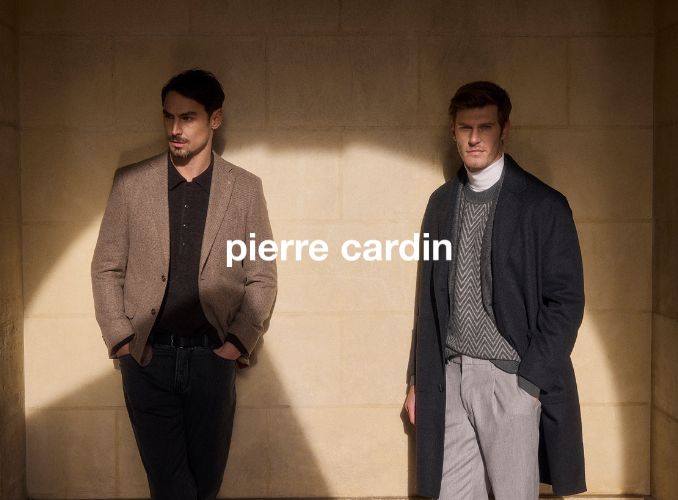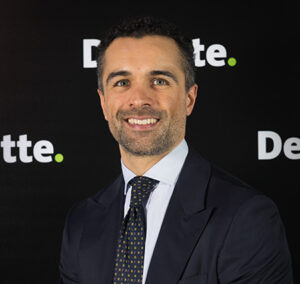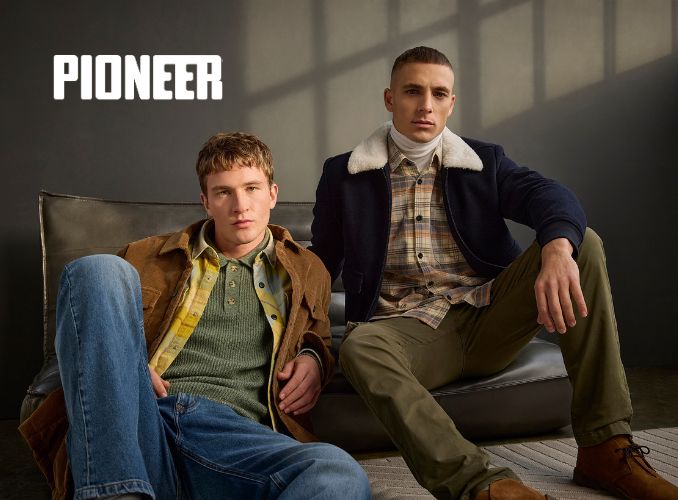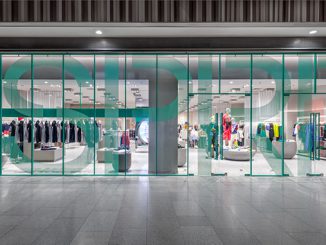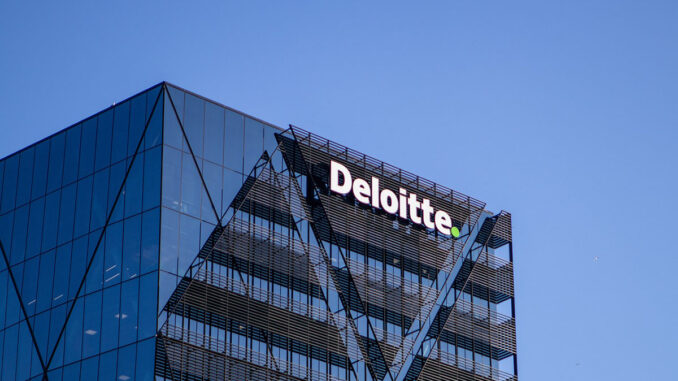
Autorin: Eva WesthoffDer Luxusmarkt schwächelt. Das unterstreicht auch der „Fashion & Luxury Private Equity and Investors Survey 2025“, der Ende September veröffentlicht wurde. Gleichzeitig bleibt dieser Markt für Investoren sehr attraktiv – auch dies ist ein Ergebnis der Umfrage, hinter der mit Deloitte eines der führenden Beratungs- und Wirtschaftsprüfungsunternehmen steht. 90 Prozent der befragten Investoren möchten weiterhin im Mode- und Luxussektor aktiv bleiben, obwohl acht von zehn derselben glauben, dass Zölle den Markt negativ beeinflussen werden. FASHION TODAY stellt den Report vor und erfährt Hintergründe und Learnings im Interview mit Elio Milantoni, Senior Partner M&A bei Deloitte Advisory, und Federico Bazzani, Partner bei Deloitte Advisory.

Einmal jährlich gibt Deloitte in seinem Report einen globalen Überblick über den Mode- und Luxusmarkt und analysiert Investitionstrends und M&A-Aktivitäten. In die aktuelle Untersuchung einbezogen wurden 60 Private-Equity-Investoren und über 114 Unternehmen aus den Bereichen Bekleidung und Accessoires, Uhren und Schmuck, Kosmetik und Parfümerie, Luxusautos, Luxushotels, Privatjets, Kreuzfahrten, Möbel, Yachten und Luxusrestaurants. Die zum Panel gehörenden 26 Unternehmen aus der Fashion- und Accessoires-Branche erzielten 2024 einen Gesamtumsatz von 206 Milliarden US-Dollar. 87 Prozent der Umsätze entfielen dabei auf Europa.
Im Vorjahresvergleich ist der Mode- und Luxusmarkt 2024 sowohl hinsichtlich des Umsatzes (minus 2,0 Prozent) als auch mit Blick auf die EBITDA-Marge zurückgegangen. Diese betrug 2024 im Luxussektor durchschnittlich 16,7 Prozent (minus 2,1 Prozentpunkte gegenüber 2023). Bei Bekleidung und Accessoires aus dem Bereich persönliche Luxusgüter lag die EBITDA-Marge laut Report höher, bei 29,4 Prozent. Hinter dieser Zahl verbirgt sich ein Rückgang um 2,6 Prozentpunkte. Die Umsätze bewegten sich hier in einem Minus von 1,4 Prozent.
Weniger Transaktionen
Zugleich haben sich die M&A-Aktivitäten im Mode- und Luxussektor verlangsamt: 2024 wurden weltweit 333 Transaktionen verzeichnet (minus 25 im Vergleich zu 2023). Das erste Halbjahr 2025 bestätigt den negativen Trend: 162 Transaktionen waren es in diesem Zeitraum, während im ersten Halbjahr 2024 ihre Zahl noch bei 188 lag und damit um 16 Prozent höher. Bei Bekleidung und Accessoires sind die Zahlen ebenfalls rückläufig: 85 M&A-Deals im Jahr 2024 stehen 105 im Vorjahreszeitraum gegenüber. Im ersten Halbjahr 2025 erfolgten 44 Fusionen und Übernahmen, 9 weniger als im ersten Halbjahr 2024. Im Bereich der persönlichen Luxusgüter verzeichnete lediglich der Bereich Kosmetik und Parfümerie einen Anstieg der Transaktionen, von 21 auf 34 innerhalb eines Jahres beziehungsweise von 18 im ersten Halbjahr 2024 auf 20 im gleichen Zeitraum 2025. Auch Uhren und Schmuck, zuletzt noch leicht rückläufig, legten im ersten Halbjahr 2025 auf 7 zu (plus 4).
Sowohl 2023 als auch 2024 blieben Hotels sowie Bekleidung und Accessoires die wichtigsten Treiber für globale M&A-Transaktionen im Bereich Mode und Luxusgüter. Was den Durchschnittswert der im Jahr 2024 durchgeführten Fusionen und Übernahmen betrifft, lagen Luxusautos 2024 mit einem Wert von 958 Millionen US-Dollar vorn. Auf den Plätzen zwei und drei: Bekleidung und Accessoires mit einem durchschnittlichen Wert von 476 Millionen US-Dollar – ein Anstieg im Vergleich zum Vorjahr um 26,1 Prozent – sowie Uhren und Schmuck mit 313 Millionen US-Dollar undsatten 167 Prozent Plus. Festzustellen ist insgesamt ein zunehmender Fokus auf Unternehmen mittlerer Größe (50 bis 250 Millionen US-Dollar Jahresumsatz).
Europa – Region mit dem höchsten Potenzial
Geografisch betrachtet verzeichneten die Regionen Asien-Pazifik (APAC) und Nordamerika mit einem Rückgang von 29 beziehungsweise 23 Transaktionen im Vergleich zu 2023 die stärksten Einbrüche, während Europa mit einem Anstieg von 14 Transaktionen das größte Wachstum erfuhr. Im ersten Halbjahr 2025 zeigte sich die Entwicklung gegenläufig: Europa verzeichnete den stärksten Rückgang mit 30 Transaktionen weniger als im gleichen Zeitraum 2024. Nordamerika folgte mit einem Rückgang von 11 M&A-Deals. Die weiteren Zahlen: Asien-Pazifik plus 1, Naher Osten plus 4, Japan plus 4, Rest der Welt plus 6.
Befragt nach den Regionen mit dem höchsten Investitionspotenzial im Bereich Fashion & Luxury, nennen dennoch 75 Prozent der Investoren Europa. Nordamerika folgt mit Abstand und 23 Prozent. Knappe 80 Prozent der Befragten rechnen aufgrund der zunehmenden geopolitischen Instabilität jedoch mit negativen Auswirkungen auf den Mode- und Luxussektor. Gerade Europa könnte mit Zöllen und Handelsbarrieren zu kämpfen haben, befürchten 33 Prozent. Lediglich für Nordamerika sehen die Befragten ein noch größeres Risiko (35 Prozent). Asien rangiert auf Platz drei (29 Prozent). Die am stärksten von Zöllen betroffenen Kategorien könnten laut Investorenpanel der Modeeinzelhandel (20 Prozent) sowie die Modeindustrie (15 Prozent) sein. Dennoch zählen nach Kosmetik und Parfümerie (25 Prozent) Modeindustrie (24 Prozent) und Modeeinzelhandel (14 Prozent) weiter zu den attraktivsten Investitionsfeldern.
Der Luxusmarkt stehe vor großen Veränderungen und Herausforderungen hinsichtlich der Kundenpräferenzen, aufstrebender Märkte, Vorschriften und der Neugestaltung der Lieferketten, resümiert Deloitte im Rahmen des „Fashion & Luxury Private Equity and Investors Survey 2025“. Eine zunehmende Konzentration auf Nearshoring, um in Zeiten geopolitischer Unsicherheiten flexiblere Lieferketten zu gewährleisten, und wachsende Bedeutung von KI sind nur zwei der fünf großen Trends, die von dem Beratungsunternehmen im Report benannt werden.
Four Questions for Elio Milantoni, Senior Partner M&A at Deloitte Advisory, and Federico Bazzani, Partner at Deloitte Advisory.
FASHION TODAY: Deloitte publishes its “Fashion & Luxury Private Equity and Investors Survey” once a year. Who is the report relevant to?
Elio Milantoni and Federico Bazzani: “Deloitte Fashion & Luxury Private Equity and Investors Survey 2025 has become a recognized point of reference for the Fashion and Luxury industry at a global level, establishing itself as a benchmark not only for private equity funds and financial investors seeking insights into the sector, but also for companies operating within the industry, offering guidance on investor sentiment, emerging trends, and potential risks on a global scale.
Policymakers, industry consultants, and other stakeholders across geographies may also benefit from the report, which examines sector developments, trade dynamics, and global investment opportunities, both from a historical perspective and with a forward-looking outlook.”
A key finding of the survey is that, despite a decline in sales and marginality in 2024 compared to the previous year, and although the majority of investors surveyed (eight out of ten) expect trade barriers and tariffs to have a negative impact, 90 percent still intend to remain active in the fashion and luxury sector. Do you have an explanation for this?
“Despite a decline in sales and margins in 2024, as well as widespread concerns regarding trade barriers and tariffs, investors remain actively engaged in the fashion and luxury sector, reflecting its enduring appeal and long-term growth potential. The sector has historically demonstrated a strong capacity to recover from economic downturns, underpinned by established brand recognition, customer loyalty, and pricing power. Temporary market challenges also present strategic opportunities, including acquisitions at favorable valuations that can drive leading consolidation initiatives.
Additionally, investors are increasingly focusing on highly vertical market niches, where differentiation, exclusivity, and a strong brand identity can enhance competitiveness and create value. Moreover, ongoing digital transformation, expansion into emerging markets, and innovation in product and experience-driven strategies continue to support growth.
While investors remain mindful of short-term risks, the sector’s solid fundamentals and structural opportunities make it an attractive and strategically significant space for sustained investment.”
On one hand, Europe is identified, along with North America and Asia, as the region most affected by rising trade barriers; on the other hand, it is also seen as the region with the highest investment potential in the fashion and luxury sector. 75 percent of respondents share this view. What strategic measures must European companies, particularly those in the apparel and accessories manufacturing and apparel and accessories retail sectors, take to maintain and justify investor interest?
“European fashion and luxury companies must pursue a balanced set of strategic measures to sustain and strengthen investor confidence in a more challenging trade and demand environment.
First, they should continue to emphasize product excellence, craftsmanship, and a superior consumer experience, rather than relying solely on price adjustments. This reinforces brand recognition, fosters long-term loyalty, and preserves demand resilience, while also creating scope to capture growth opportunities in emerging markets.
Second, companies need to build greater operational resilience by optimizing supply chains, including selective near-shoring and diversification of production. Such measures reduce tariff exposure and help mitigate geopolitical risks.
Third, sustainability must be embedded as a structural priority. Investors and consumers, particularly younger generations, are increasingly attentive to responsible sourcing, environmental stewardship, and fair labor practices. Demonstrating credibility on these fronts is now essential to maintaining both relevance and trust.
Finally, accelerating digital transformation and strengthening omnichannel capabilities will be critical to deepening consumer engagement, adapting swiftly to evolving preferences, and ensuring competitiveness in an increasingly digital marketplace.”
More than half of investors are focusing their strategies on medium-sized companies. How do you interpret this stronger focus on medium-sized targets in the fashion and luxury market?
“Medium-sized companies represent a strategic sweet spot for investors, combining established operations with significant growth potential. Unlike large, mature brands, they often offer opportunities for consolidation, operational optimization, and market expansion. Their agility allows them to respond quickly to consumer trends and shifting market dynamics. For financial investors, these companies typically present attractive valuations and clear avenues to create value, whether through scaling, supply chain enhancements, international expansion, or aggregation within a diversified brand portfolio.
Consequently, medium-sized firms often serve as optimal platforms for both active value creation and sustainable, long-term strategic growth.”

